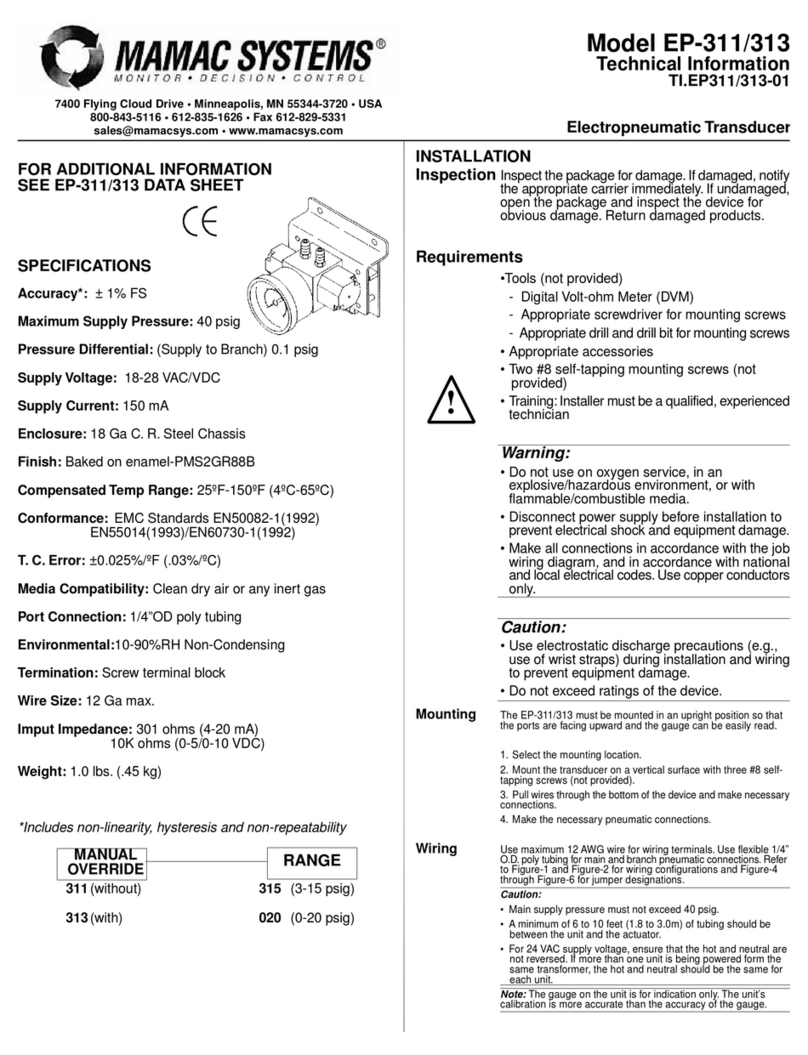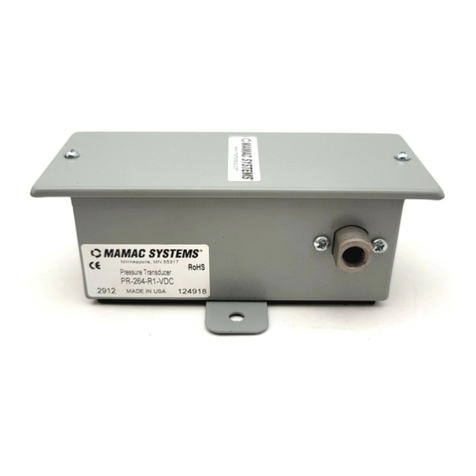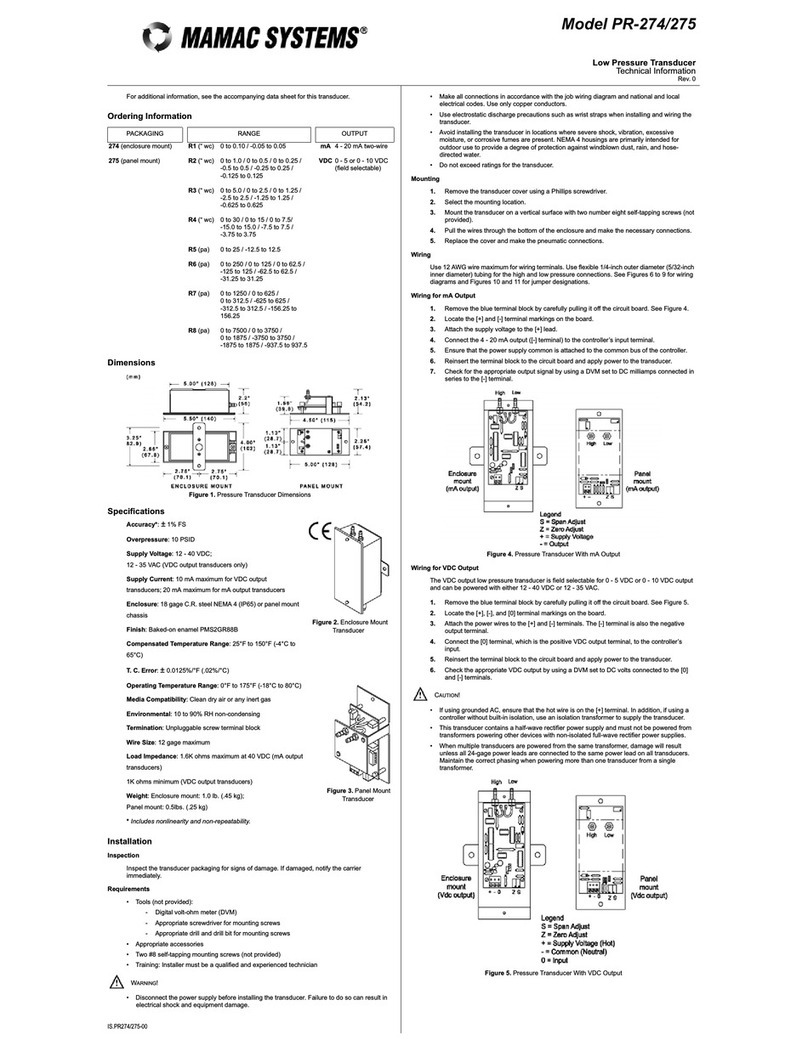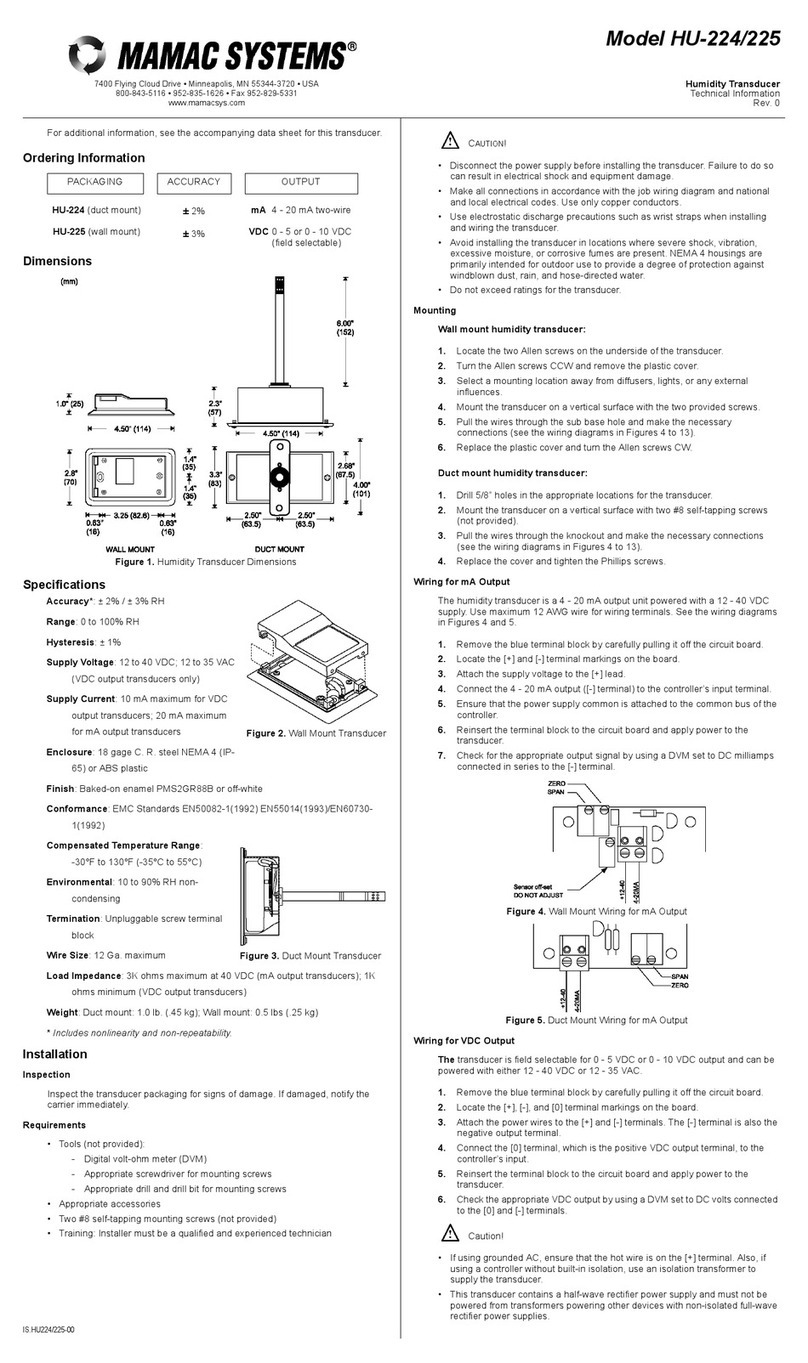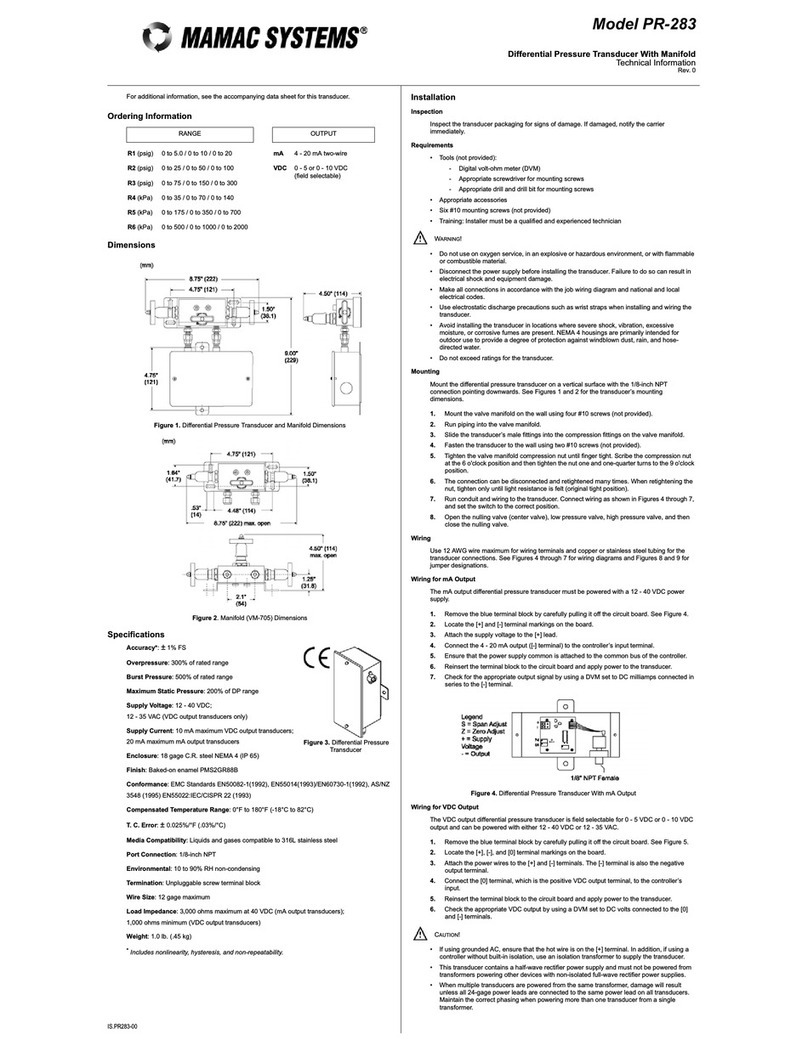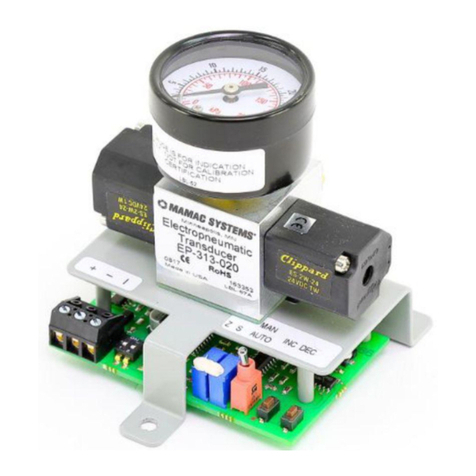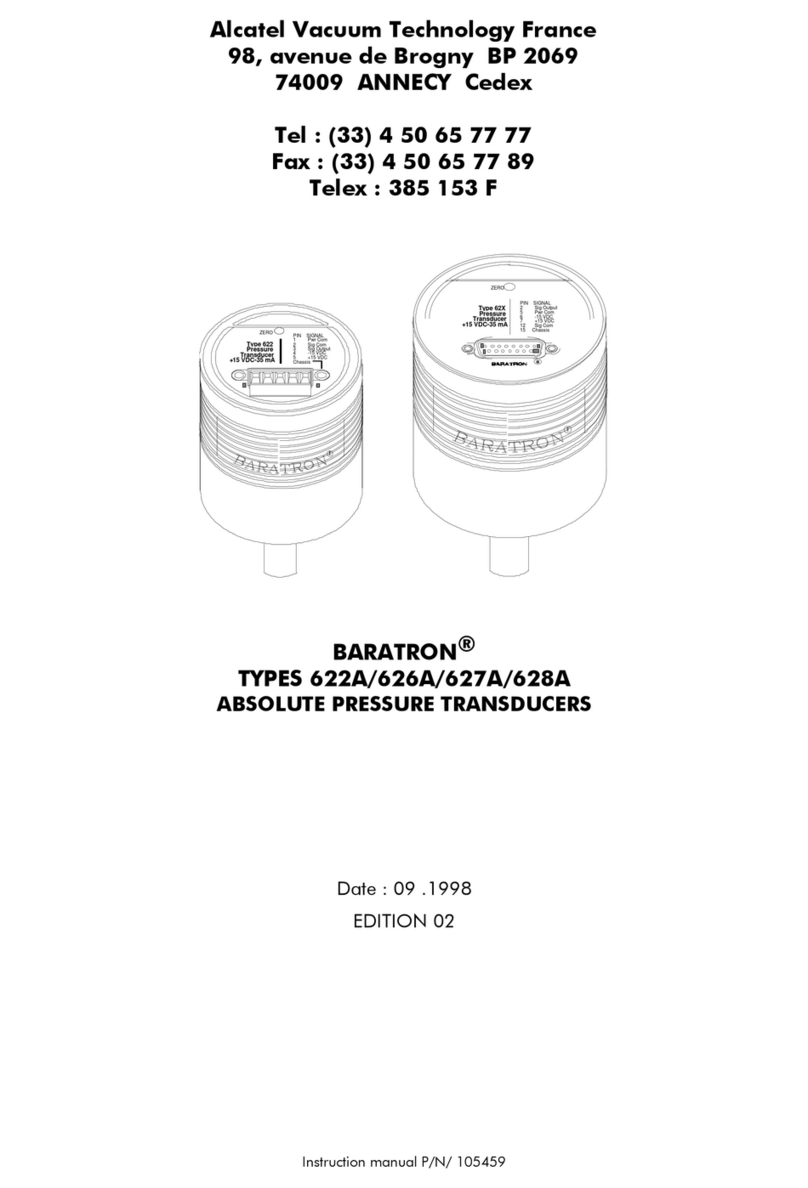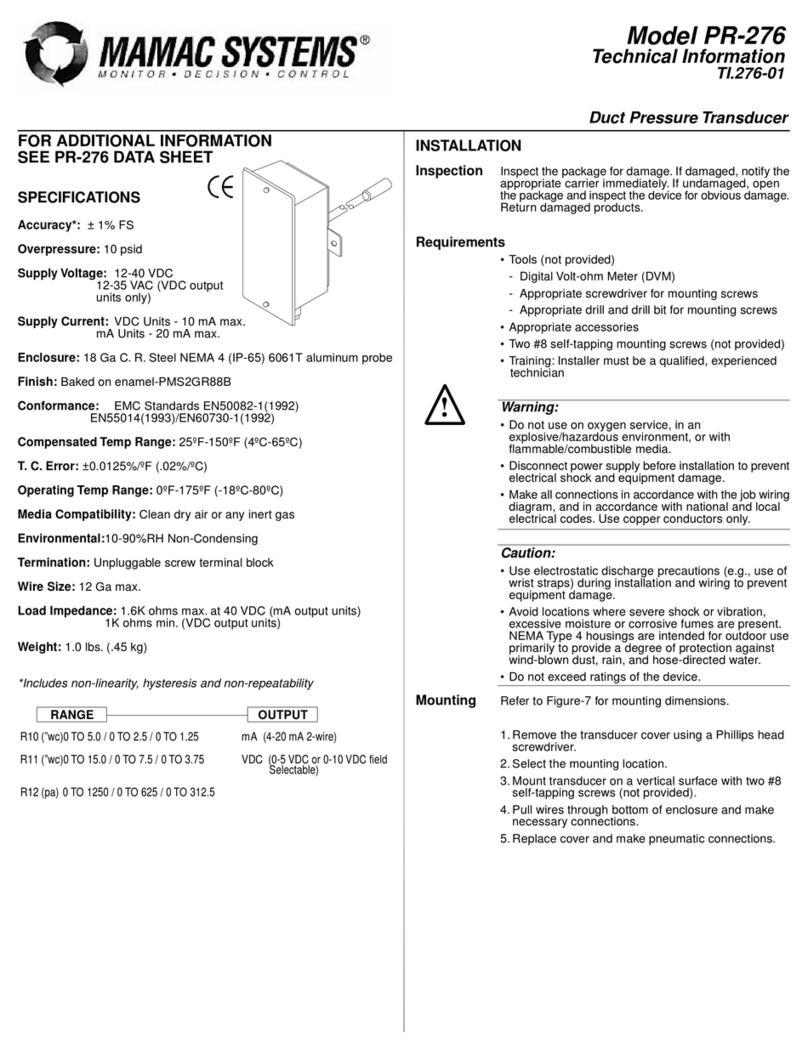
Model PR-276
Technical Information
TI.276-03
DUCT PRESSURE TRANSDUCER
Page 2 of 4
PR-276 Duct Pressure Transducer with mA Output
TYPICAL APPLICATIONS (wiring diagrams)
PR-276 pressure transducers with VDC output are field selectable 0–5 VDC or
0–10 VDC output and can be powered with either a 12–40 VDC or 12–35 VAC.
The following describes the proper wiring of these pressure transducers with
VDC output:
Wiring PR-276 Units with VDC Output
1. Remove the terminal block by carefully pulling it off the circuit board.
2. Locate the [+], [-] and [0] terminal markings on the board.
3. Attach the power wires to the [+] and [-] terminals. The [-] terminal is also
the negative output terminal.
4. Connect the [0] terminal, which is the positive VDC output terminal, to the
controller’s input terminal.
5. Re-insert the terminal block to the circuit board and apply power to the unit.
6. Check the appropriate VDC output using a voltmeter set on DC volts across
the [0] and [-] terminals.
PR-276 pressure transducers with 4–20 mA output units are powered with a
12–40 VDC supply.
The following describes the proper wiring of these pressure transducers with
mA output:
Wiring PR-276 Units with mA Output
1. Remove the terminal block by carefully pulling it off the circuit board.
2. Locate the [+] and [-] terminal markings on the board.
3. Attach the supply voltage to the [+] lead.
4. Connect the 4–20 mA output ([-] terminal) to the controller’s input terminal.
5. Ensure that the power supply common is attached to the common bus of
the controller.
6. Re-insert the terminal block to the circuit board and apply power to the unit.
7. Check for the appropriate output signal using a DVM set on DC milliamps
connected in series with the [-] terminal.
PR-276 Duct Pressure Transducer with VDC Output
TYPICAL APPLICATIONS (wiring diagrams)
Input Signal
+Common
+
+
Shield/Ground
Controller / Meter / Recorder
mA Output Transducer Only 12–40 VDC Power Supply
Input Signal
+Common
+
Shield/Ground
Controller / Meter / Recorder
mA Output Transducer Only
Figures 1 & 2 illustrate typical wiring diagrams for the PR-276 Series,
4–20 mA, two- wire output duct pressure transducers.
Figure 1 – Wiring for mA Output Duct Pressure Transducers with External DC
Power Supply
Figure 2 – Wiring for mA Output Duct Pressure Transducers where Controller or
Meter has Internal DC Power Supply
Figures 3 & 4 illustrate typical wiring diagrams for the PR-276,
0–5/0–10 VDC output duct pressure transducers.
Figure 3 – Wiring for VDC Output Duct Pressure Transducers when applied
with External AC Supply
Signal
+
Common
Supply Neutral
Hot
O
Input Signal
+Common
+
Shield/Ground
Controller / Meter / Recorder
VDC Output Transducer Only 12–35 VAC Transformer
Figure 4 – Wiring for VDC Output Duct Pressure Transducers when applied
with External DC Power Supply
S1 S2 Zu
Zb
S
+0
S3
ON
ON ON
MAMAC 9248
Zu
S
MAMAC 9248
S1 S2
ON
ON
Zu
Zb S
Zu
S
Signal
+
Common
Supply
O
Input Signal
+Common
+
Shield/Ground
Controller / Meter / Recorder
VDC Output Transducer Only 12–40 VDC Power Supply
Input Signal
Common
RoHS
RoHS RoHS
O N
O N
O N
O N
O N
O N
O N
O N
O N
O N
O N
O N O N
O N
Caution:
If you are using grounded AC, the hot wire must be on the [+] terminal. Also, if you are using a controller without built-in isolation, use an isolation
transformer to supply the PR-276 transducer.
Caution:
This product contains a half-wave rectifier power supply and must not be powered off transformers used to power other devices utilizing non-isolated
full-wave rectifier power supplies.
Caution:
When multiple PR-276 units are powered from the same transformer, damage will result unless all 24G power leads are connected to the same
power lead on all devices. It is mandatory that correct phasing be maintained when powering more than one device from a single transducer.
mandatory that correct phasing be maintained when powering more than one device from a single transducer.


